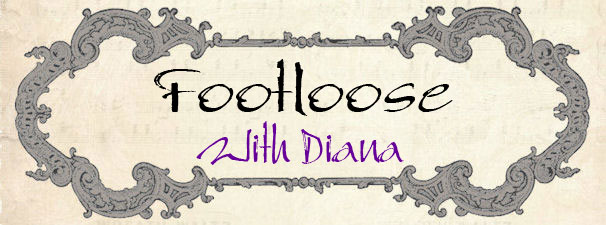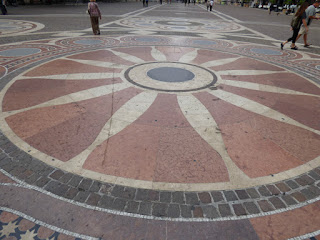Budapest is one of the largest cities in the EU at 1.75 million people. And exquisitely beautiful. Our first visit was to the Gellert Baths, built between 1912 and 1918 in the Art Nouveau style, near Heroes' Square. Public mineral springs baths like this are still very much in use in this part of the world and this one's just exquisite:
And that's just the exterior. Check out the interior (at least, the parts you can see without wearing a towel)!
On the way from the Baths to Heroes' Square, we walked past Vajadhunyard Castle, built in 1896 as part of the Millennial Exhibition celebrating the millennium in Hungary since the Hungarian Conquest of the Carpathian Basin in 895. It was designed to represent over 20 landmark buildings in Hungary, so it displays a lot of different architectural styles. Interestingly, it was originally built in cardboard and wood, but became so popular that it was rebuilt in stone and brick between 1904 and 1908.
A pretty bridge crosses over to Heroes' Square:
Heroes' Square celebrates the Seven Chieftains of the Magyars, among others. It was also erected in 1896 as part of the Millennium celebrations. In the center is a column topped by a statue of the Angel Gabriel:
A cluster representing the seven Magyar chieftains and their horses surround the base of the column:
In a semi-circle arcade, there are massive statues of assorted Magyar kings/saints or mythical figures; this first one is a man with a snake, the symbol of war:
The square is flanked by a Fine Arts Museum and the Mücsamok, a gorgeous brick and stone 1875 exhibition hall.
Everywhere you look is amazing architecture and the area around Heroes' Square is no exception:
Our next stop was the 1905 St. Stephen's Basilica:
There's a pretty plaza in front of the Basilica:
And (almost) best of all, a gelato shop that makes cones in the shape of roses!
And that's just the exterior. Check out the interior (at least, the parts you can see without wearing a towel)!
On the way from the Baths to Heroes' Square, we walked past Vajadhunyard Castle, built in 1896 as part of the Millennial Exhibition celebrating the millennium in Hungary since the Hungarian Conquest of the Carpathian Basin in 895. It was designed to represent over 20 landmark buildings in Hungary, so it displays a lot of different architectural styles. Interestingly, it was originally built in cardboard and wood, but became so popular that it was rebuilt in stone and brick between 1904 and 1908.
A pretty bridge crosses over to Heroes' Square:
Heroes' Square celebrates the Seven Chieftains of the Magyars, among others. It was also erected in 1896 as part of the Millennium celebrations. In the center is a column topped by a statue of the Angel Gabriel:
A cluster representing the seven Magyar chieftains and their horses surround the base of the column:
In a semi-circle arcade, there are massive statues of assorted Magyar kings/saints or mythical figures; this first one is a man with a snake, the symbol of war:
Andrew II of Hungary, who led a crusade to the Holy Land:
Louis I of Hungary, who occupied Naples:
St. Stephen of Hungary receiving his crown from an emissary of the Pope - he was the first King of Hungary and statues of him abound in Budapest.
Female statue of Peace:
Loved this light standard in the Square:
Everywhere you look is amazing architecture and the area around Heroes' Square is no exception:
Our next stop was the 1905 St. Stephen's Basilica:
There's a pretty plaza in front of the Basilica:
And (almost) best of all, a gelato shop that makes cones in the shape of roses!


































































No comments:
Post a Comment